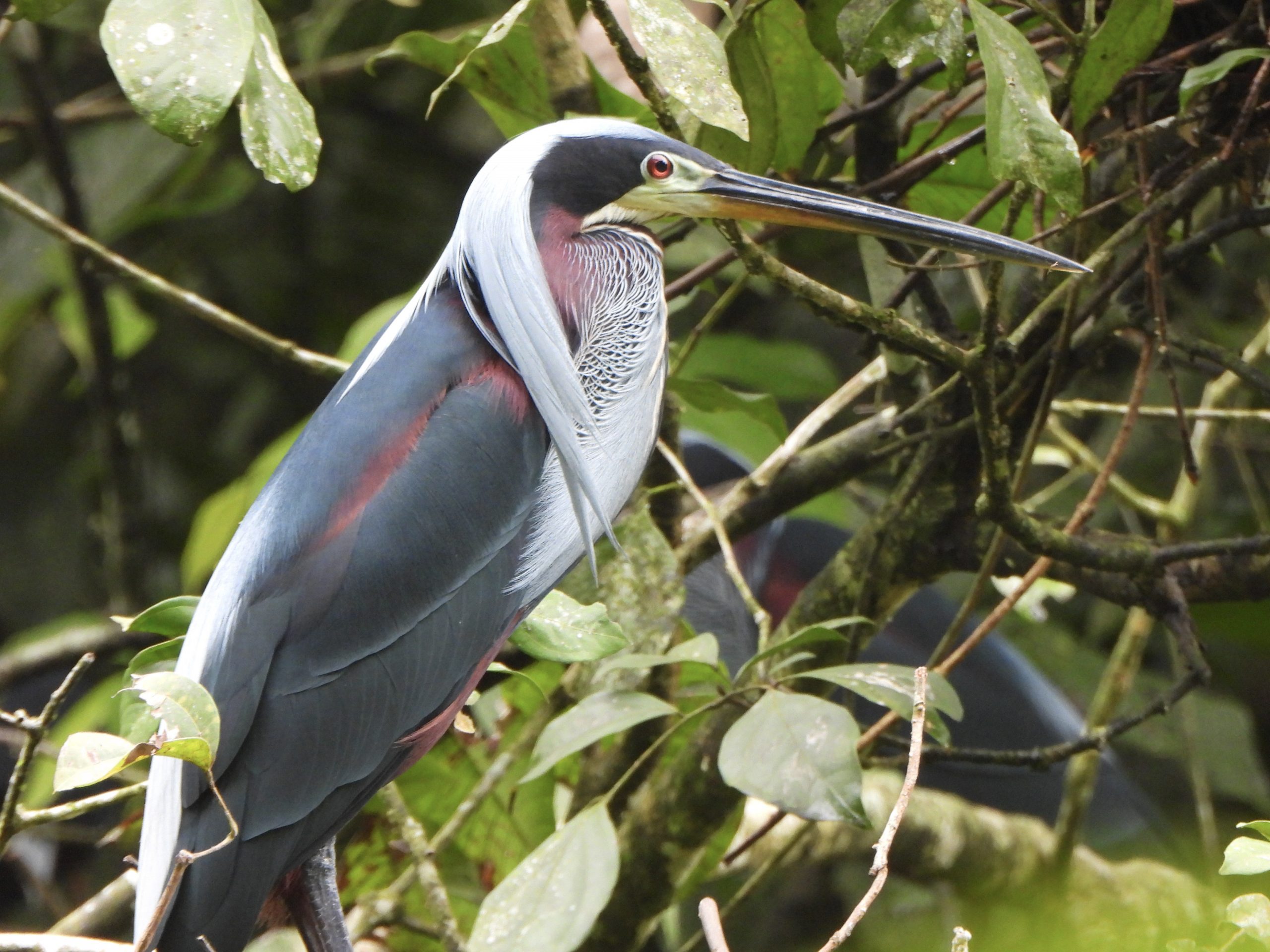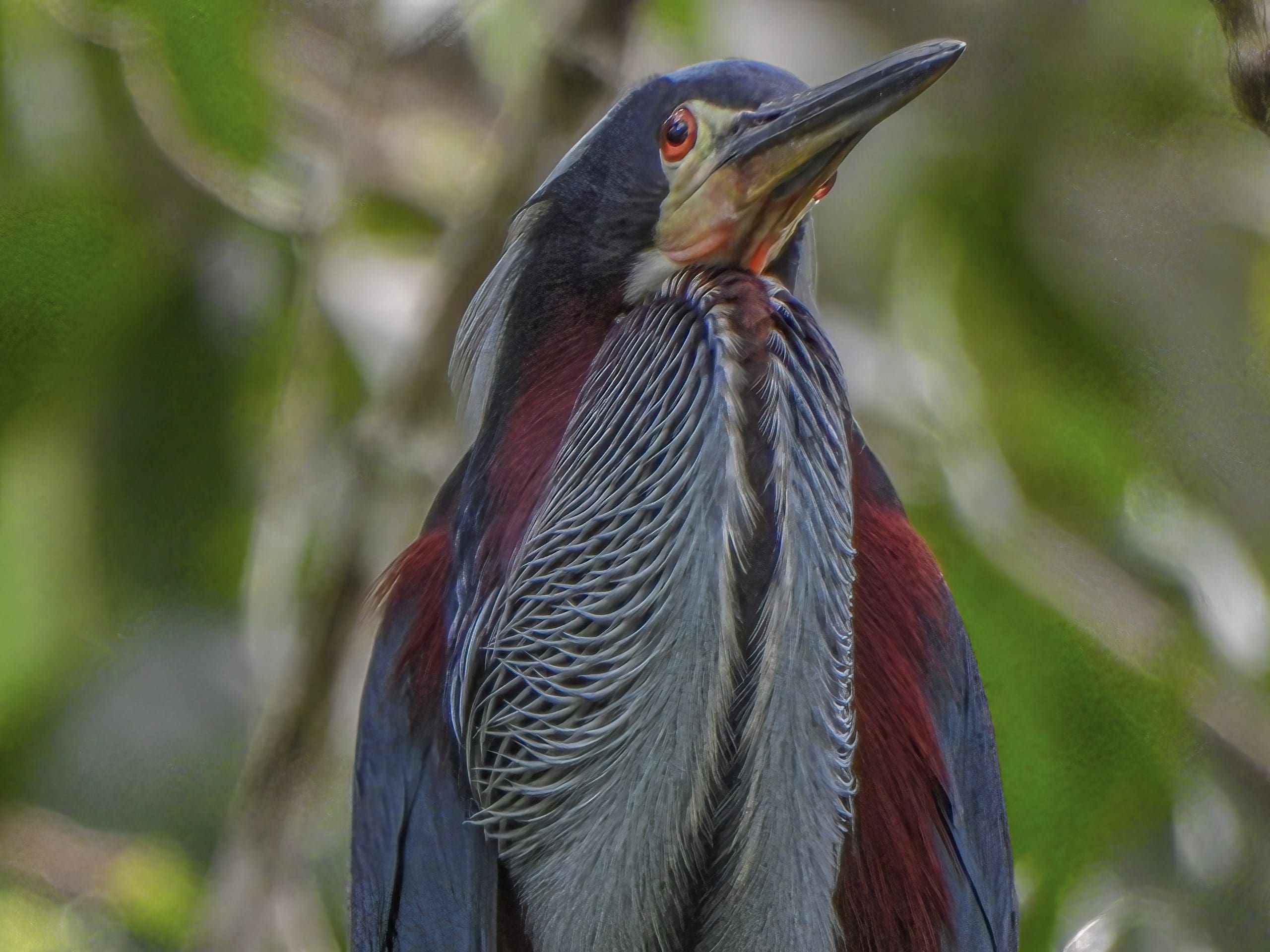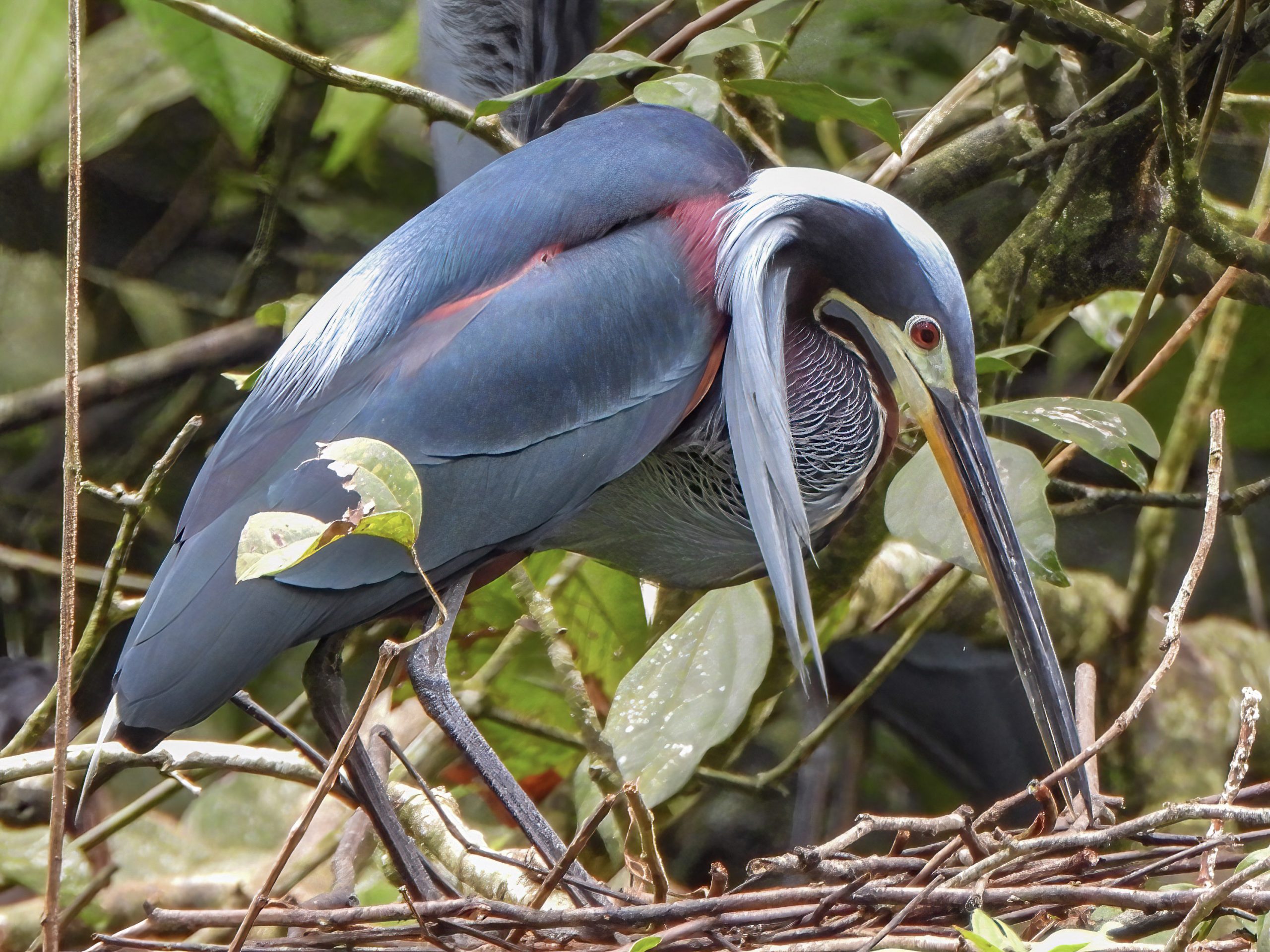
Pacuare Nature Preserve: Home to the Rarely Seen Agami Heron
The northern Caribbean coast of Costa Rica is a large drainage basin for the Reventazón, Sarapiquí and Pacuare Rivers, and with its lowland tropical rainforest, swamps and canals, it is often referred to as the “Amazon” of Costa Rica. The well-known destination is Tortuguero, but we spent a long weekend in the much more remote region of Pacuare, to the south of Tortuguero.[
The highlight was the opportunity to enter the Pacuare Private Nature Preserve. Founded in 1989 by John Denham, an Englishman who bought almost 1,000 hectares, it has been best known for decades for turtle conservation. A foundation and program for turtle protection was created in the 1990s, with facilities and volunteer programs to protect the turtle nursery.
A new attraction
The best time to see nesting turtles is not in July, which is when we visited, but we did not go to see turtles. We went to see the nature preserve’s new attraction — likely the largest known nesting colony of the Agami heron. The discovery of this nesting colony occurred less than a decade ago, and trips there have only been available since about 2018.
To visit the colony, you have to take another boat trip around the island to the entrance of the reserve, then walk about a kilometer up along the ocean, then about another 300 meters through the swamp.
The Agami have chosen an island in the middle of a pond in the middle of the island. It was a drinking hole for cattle, dug decades ago, that formed this small island after the land was purchased for the reserve. When you arrive, you are behind a mesh hide so as not to scare them.
Simply put, the Agami heron is one of the most beautiful birds in the world.
Hundreds of Agami are there, nesting, feeding young, and fledged young still sitting around. If you are lucky, you can see the mating ritual of their head shaking and their lower mandible quickly turns crimson. Each day we stayed about an hour or so watching the show.
Rarely seen
Not much is known about the Agami. They are listed as a vulnerable species, since no one really knows how many there are or where they go after breeding. They are difficult to see normally because they are very reclusive and stay deep in the forest wetlands. Pacuare is one of only a handful of known breeding areas, and may by now be the largest in the world.
The best time to see the Agami is from mid-May until August. By then, the adults leave the juveniles behind until they too fly away a few weeks later. It is truly a special trip to see a special bird.
After our Agami encounter, we were treated to an unexpected event. We were lucky to witness the release of the last few remaining leatherback turtles, uncovered from nests after most others had left. We stood with all the kid volunteers and cheered as the four little turtles raced into the surf towards their uncertain future.
As we sat at the water’s edge watching the sunlight fade, after encounters with such wonders of nature, we were reminded again what an amazing little country our Costa Rica is.
Getting to Pacuare
The base for our trip to the Pacuare Nature Preserve was the Lirio Lodge in the “town” of Pacuare. Getting to Pacuare and Lirio Lodge is not the easiest thing in the world. You drive towards Limón, then to Bataan (not the John Wayne “Back to Bataan”) and then through unpaved banana plantation roads until you reach a narrow road into the dock. How people found it before GPS is amazing!
Once there, you can park in a gated and secure area. Then you travel for about 15 or 20 minutes in a launch through the canals until you get to the Laguna Madre de Dios, where the Lirio Lodge is located.
Pacuare is a village of fewer than 50 families, although most are single men. They are spread out over kilometers of canals and have no supplied water or electricity. There is an EBAIS health clinic where a doctor travels via boat twice a month.
The lodge provides basic accommodations that should be marketed as glamping. There is a meeting and eating area at the water’s edge that is relaxing. Meals were all very good, and they met the dietary requirements of all. There is no internet there, which some think is a problem. But for us, having 48 hours unplugged, with just the jungle and animal sounds was a needed purgative. Birds flying above, sloths and monkeys clinging to the trees, the sound of rain at night on the canvas roof, and the sun rising and setting over the canals — all are more than a welcome replacement for reading emails.



